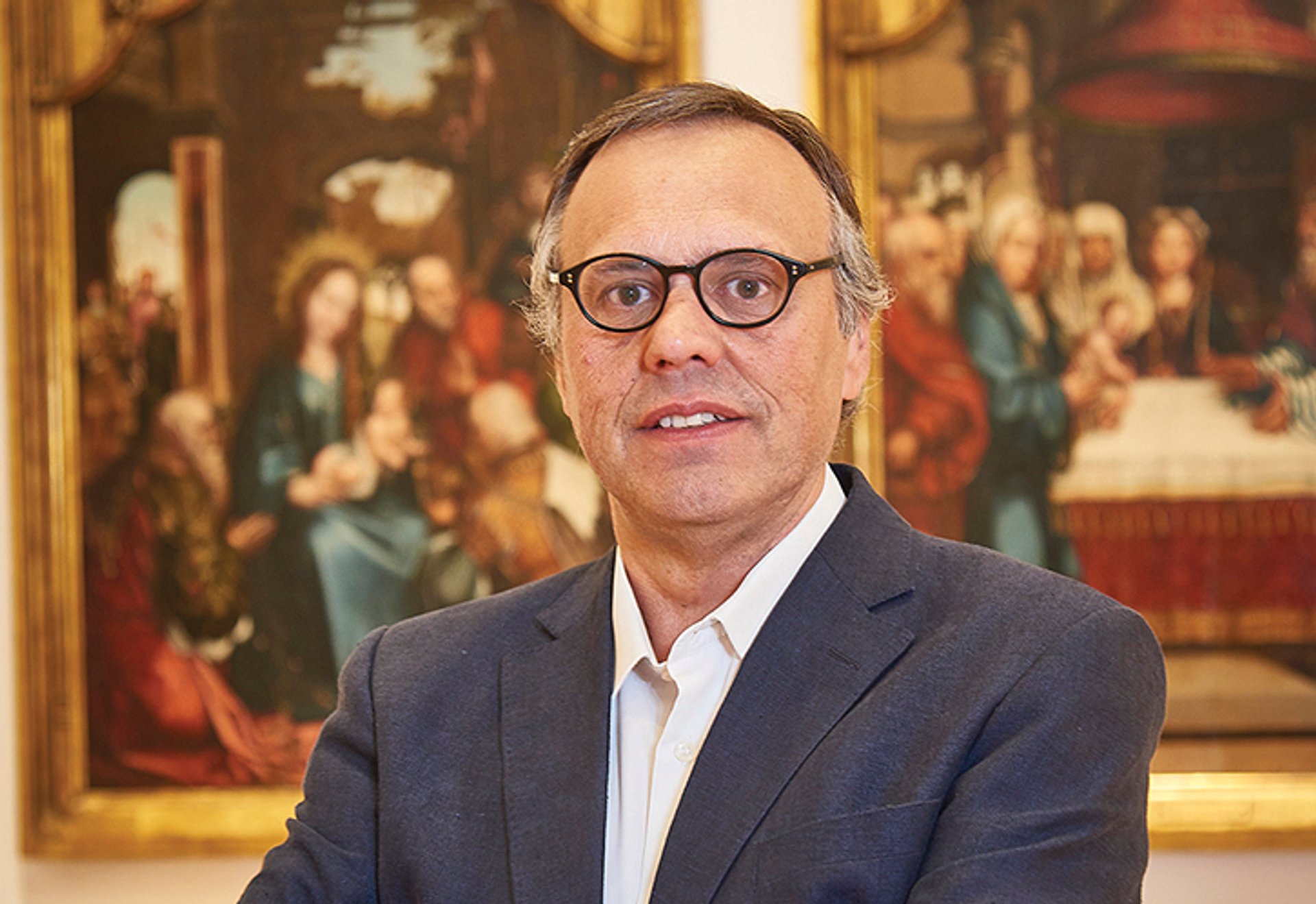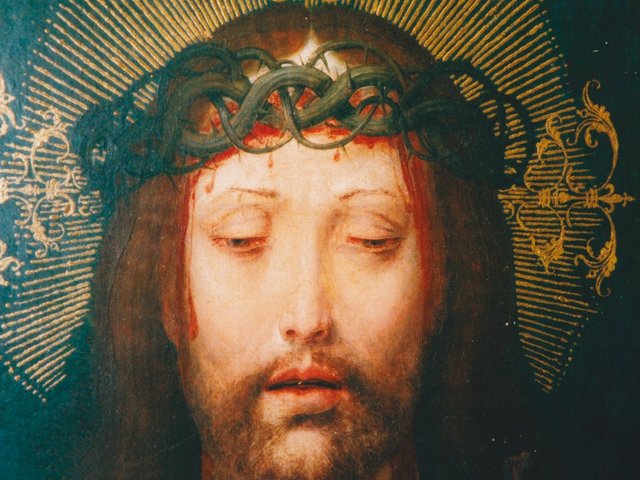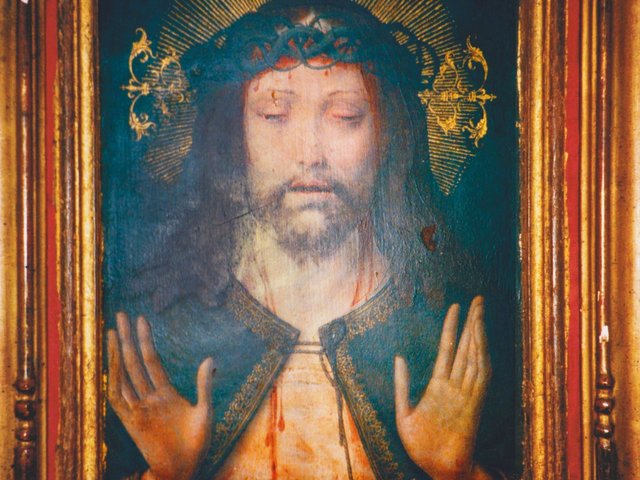An investigation by the Lisbon-based magazine Expresso reveals the machinations of the Portuguese government and state museums over the Kwer’ata Re’esu, the icon which was looted by a British curator in Ethiopia during the battle of Maqdala in 1868. Expresso’s report was sparked by the publication of the first colour image of the painting in the October 2023 issue of The Art Newspaper.
The question now is whether the Kwer’ata Re’esu should be bought from its private Portuguese owner and returned. The Ethiopian government’s Authority for Research and Conservation of the Cultural Heritage is pressing for its restitution. But further inquiries by The Art Newspaper show that there is still disagreement among Portuguese officials over the work’s future.
The Kwer’ata Re’esu, which depicts the suffering Christ wearing the crown of thorns, dates from around 1520 and was painted either by a Flemish artist or by an Iberian artist working in a Flemish style. In the 16th century it was taken to Ethiopia, in unknown circumstances, and presented to the emperor. It then became a symbol of imperial rule, and numerous copies loosely based on the original painting are still widely revered by Ethiopian Christians.
In 1868, during the UK’s military offensive in Ethiopia, the British Museum curator Richard Holmes seized the Kwer’ata Re’esu from the tent of emperor Tewodros II, who had shot himself and lay on his deathbed.
Holmes failed to hand over the painting to the museum, secretly keeping it in his private collection. His heir sold the Kwer’ata Re’esu and in 1950 it ended up being acquired by the Portuguese art historian Luís Reis Santos. He died in 1967 and the painting still belongs to his Coimbra-based widow, Isabel.
In 1998, I became the first outsider in living memory to see the painting, when I was shown it by Isabel Reis Santos, whose name I agreed at the time not to publish. The Art Newspaper report on the astonishing story of the Kwer’ata Re’esu in 1998 led to behind-the-scenes action by Portuguese officials.
A government file on the Kwer’ata Re’esu, accessed by Christiana Martins of Expresso, reveals that a handful of key figures gathered on 11 November 2000 at the Reis Santos home to view the painting and discuss its future. Along with Isabel and her daughter Leonor, they included two executives from the government’s Portuguese Institute of Museums, the director of Lisbon’s Museu Nacional de Arte Antiga and the director of Coimbra’s Museu Nacional de Machado de Castro.
The conclusion of the meeting was that the Portuguese government should consider buying the Kwer’ata Re’esu. Reis Santos later asked for 500m escudos (around €4.2m in today’s money), but the ministry of culture was only willing to consider offering 75m escudos (around €625,000). It was also argued that the UK government should put up the purchase price, since the painting had been looted by a Briton employed by a national museum.
Valuing the Kwer’ata Re’esu is extremely difficult. As a somewhat ordinary Flemish-style painting of around 1520, depicting a suffering Christ and by an unknown artist, it could be worth as little as around €10,000. Nevertheless, its historical importance adds enormously to its financial value. On the other hand, since Ethiopians are calling for its restitution, it would be difficult to sell for a substantial sum on the open market.
At the 2000 meeting there was little agreement about the ultimate future of the painting. José Luís Porfírio, the then director of the Lisbon museum, and his colleague Joaquim Oliveira Caetano (now the museum’s director) thought that it should go back to Ethiopia. Adília Alarcão, the then director of the Coimbra museum and a friend of the Reis Santos family, hoped to display it with the museum’s collection.
The Portuguese government was reluctant to lose control over the painting. A decision was therefore made to restrict its movement, by prohibiting its export. In the published notice in the government’s gazette in 2002 it was not identified as the Kwer’ata Re’esu and nothing was recorded about its Ethiopian provenance. Instead it was simply described as a “possibly Portuguese-Flemish” painting of the suffering Christ. Reis Santos was named as the owner, which led to The Art Newspaper’s decision to name her last October.

Joaquim Oliveira Caetano, director of Lisbon’s Museu Nacional de Arte Antiga, says the painting should be returned Photo: © Paulo Alexandrino
The decision against pushing for the return of the Kwer’ata Re’esu is now being openly criticised by a former Portuguese official. Elsa Garrett Pinho was in the early 2000s an official at the Portuguese Institute of Museums. Still a public figure, now an academic at the University of Lisbon, she is speaking out, telling The Art Newspaper that she personally “deeply believes that the painting should be returned to Ethiopia”.
Morally, it is a source of discomfort that the Portuguese state has linked the painting to Portugal’s cultural heritageElsa Garrett Pinho, academic and former Portuguese official
Pinho argues that “morally, it is a source of discomfort that the Portuguese state has linked the painting to Portugal’s cultural heritage”. She believes that the Kwer’ata Re’esu was in effect “kidnapped during a violent punitive raid” by the British—and it should be returned.
Joaquim Oliveira Caetano, of the Museu Nacional de Arte Antiga, and an expert in Portuguese 15th- and 16th-century paintings, is also calling for the restitution of the Kwer’ata Re’esu.
The situation remains that the Kwer’ata Re’esu can not be exported (or even conserved) without the permission of the Portuguese government. It is still owned by Reis Santos, who so far has been unwilling to sell it at what she regards as unacceptable prices. The picture is still believed to be stored in a bank vault, where it has languished for over half a century.
The Kwer’ata Re’esu continues to be in limbo, out of sight, while Ethiopians are calling for its restitution. But any solution will be complicated. It would require compensation to Reis Santos, a willingness by the Portuguese government to allow its export, an Ethiopian decision on an appropriate home (a church or museum), and a suitable arrangement to bring it back to the country where it had been treasured for 300 years.






